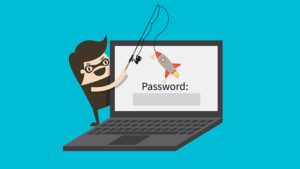-
Table of Contents
- Cybersecurity for Small Businesses: Essential Measures to Safeguard Your Company’s Digital Assets
- Data Breaches: Understanding the Risks and Protecting Your Sensitive Data
- Social Media Privacy: Tips for Protecting Your Personal Information Online
- Phishing Scams: How to Identify and Avoid Malicious Emails and Websites
- Password Security: Best Practices for Creating and Managing Strong Passwords
Cybersecurity: Protecting Your Digital World from Threats and Ensuring Online Safety
In the modern digital age, cybersecurity has become paramount to safeguard our online presence and protect our sensitive information. With the increasing reliance on technology and the internet, we face a growing number of threats that can compromise our digital security. Cybersecurity measures are essential to mitigate these risks and ensure the integrity, confidentiality, and availability of our digital assets. This introduction will delve into the importance of cybersecurity, exploring the various threats and vulnerabilities that exist in the digital realm and highlighting the strategies and best practices for protecting our online safety.
Cybersecurity for Small Businesses: Essential Measures to Safeguard Your Company’s Digital Assets
In today’s digital age, cybersecurity has become paramount for businesses of all sizes. With the increasing reliance on technology and the proliferation of cyber threats, it is essential to implement robust cybersecurity measures to safeguard your company’s digital assets and ensure online safety.
Cybersecurity encompasses a wide range of practices and technologies designed to protect against unauthorized access, data breaches, and other malicious activities. By implementing effective cybersecurity measures, businesses can minimize the risk of financial losses, reputational damage, and legal liabilities associated with cyberattacks.
One of the most important aspects of cybersecurity is network security. This involves securing your network infrastructure, including firewalls, routers, and switches, to prevent unauthorized access and protect against malicious traffic. Additionally, implementing intrusion detection and prevention systems (IDS/IPS) can help detect and block suspicious activity on your network.
Another critical element of cybersecurity is endpoint security. This involves protecting individual devices, such as computers, laptops, and mobile phones, from malware, viruses, and other threats. By installing and maintaining up-to-date antivirus software, firewalls, and operating system patches, you can significantly reduce the risk of endpoint compromise.
Data protection is also essential for cybersecurity. This involves implementing measures to protect sensitive data from unauthorized access, theft, or loss. Encryption, both at rest and in transit, is a key component of data protection. Additionally, implementing data backup and recovery plans ensures that your data is protected in the event of a cyberattack or other disaster.
Regular security audits and vulnerability assessments are crucial for identifying and addressing potential security weaknesses in your systems. By conducting these assessments, you can proactively identify and mitigate vulnerabilities before they can be exploited by attackers.
In addition to technical measures, cybersecurity also involves implementing strong security policies and procedures. These policies should define acceptable use of company resources, establish clear roles and responsibilities for cybersecurity, and outline incident response procedures. By educating employees about cybersecurity best practices, you can further strengthen your defenses against cyber threats.
Cybersecurity is an ongoing process that requires constant vigilance and adaptation to evolving threats. By implementing a comprehensive cybersecurity strategy that encompasses network security, endpoint security, data protection, security audits, and strong security policies, businesses can effectively protect their digital assets and ensure online safety. Remember, cybersecurity is not just an IT issue; it is a business imperative that requires the involvement and support of all stakeholders.
Data Breaches: Understanding the Risks and Protecting Your Sensitive Data
In today’s digital age, cybersecurity has become paramount to safeguard our online presence and protect sensitive data. Data breaches, a prevalent threat, pose significant risks to individuals and organizations alike. Understanding these risks and implementing robust security measures is crucial for ensuring online safety.
Data breaches occur when unauthorized individuals gain access to sensitive information, such as personal data, financial records, or intellectual property. The consequences can be severe, ranging from identity theft and financial loss to reputational damage and legal liability.
To mitigate these risks, it is essential to implement comprehensive cybersecurity measures. Strong passwords, multi-factor authentication, and regular software updates are fundamental steps to protect online accounts. Additionally, using reputable antivirus and anti-malware software can prevent malicious software from compromising devices.
Organizations must also prioritize cybersecurity by implementing robust data protection policies and procedures. Encryption, access controls, and regular security audits are essential to safeguard sensitive data. Employee training and awareness programs play a vital role in preventing human error, which can often lead to data breaches.
Furthermore, it is crucial to be vigilant and aware of potential phishing scams. Phishing emails or websites attempt to trick individuals into revealing sensitive information by impersonating legitimate entities. By recognizing the signs of phishing and avoiding suspicious links or attachments, you can protect yourself from falling victim to these scams.
In the event of a data breach, prompt action is essential. Notify affected individuals and relevant authorities immediately. Conduct a thorough investigation to determine the extent of the breach and implement measures to prevent future incidents.
Cybersecurity is an ongoing process that requires constant vigilance and adaptation to evolving threats. By understanding the risks of data breaches and implementing robust security measures, individuals and organizations can protect their digital world and ensure online safety. Remember, cybersecurity is not just a technical issue; it is a shared responsibility that requires collaboration and awareness from all stakeholders.
Social Media Privacy: Tips for Protecting Your Personal Information Online

In today’s digital age, cybersecurity has become paramount to safeguard our online presence and protect our sensitive information. With the proliferation of cyber threats, it is essential to adopt proactive measures to mitigate risks and ensure the security of our digital assets.
One of the most critical aspects of cybersecurity is protecting our personal information online. Social media platforms have become a breeding ground for data breaches and identity theft. To safeguard our privacy, it is crucial to exercise caution when sharing personal details and limit the amount of information we make publicly available.
Strong passwords are the first line of defense against unauthorized access to our accounts. Avoid using easily guessable passwords and opt for complex combinations of letters, numbers, and symbols. Additionally, consider using a password manager to generate and store secure passwords.
Two-factor authentication (2FA) adds an extra layer of security by requiring a second form of verification, such as a code sent to your phone, when logging into an account. This makes it significantly harder for attackers to gain access even if they have your password.
Social media platforms often offer privacy settings that allow you to control who can see your posts and personal information. Take advantage of these settings to limit the visibility of your content to trusted individuals or groups. Additionally, be mindful of the apps and third-party services you connect to your social media accounts, as they may have access to your personal data.
Phishing scams are a common tactic used by cybercriminals to trick individuals into revealing sensitive information. Be wary of emails or messages that appear to come from legitimate sources but contain suspicious links or attachments. Never click on links or open attachments from unknown senders.
Regularly updating software and operating systems is crucial for patching security vulnerabilities that could be exploited by attackers. Software updates often include security enhancements that protect against the latest threats.
In the event of a data breach or suspected compromise, it is essential to act promptly. Change your passwords immediately and notify the affected platforms. Consider freezing your credit to prevent unauthorized access to financial accounts.
Cybersecurity is an ongoing process that requires vigilance and proactive measures. By implementing these best practices, we can significantly reduce the risk of cyber threats and protect our digital world from harm. Remember, online safety is a shared responsibility, and by taking these steps, we can collectively create a more secure and trustworthy digital environment.
Phishing Scams: How to Identify and Avoid Malicious Emails and Websites

In today’s digital age, cybersecurity has become paramount to safeguard our online presence and protect our sensitive information. One of the most prevalent threats we face is phishing scams, which attempt to trick individuals into revealing personal data or financial information. Understanding how to identify and avoid these malicious emails and websites is crucial for maintaining online safety.
Phishing scams typically involve emails or text messages that appear to come from legitimate organizations, such as banks, government agencies, or online retailers. These messages often contain links to websites that mimic the authentic websites of these organizations. By clicking on these links, victims are directed to fraudulent websites that request sensitive information, such as passwords, credit card numbers, or social security numbers.
To protect yourself from phishing scams, it is essential to be vigilant and pay attention to the following red flags:
- Suspicious email addresses: Phishing emails often come from addresses that do not match the organization they claim to represent.
- Generic greetings: Phishing emails typically use generic greetings, such as “Dear Customer” or “Dear User,” instead of addressing you by name.
- Urgent language: Phishing emails often create a sense of urgency by claiming that your account is at risk or that you need to take immediate action.
- Suspicious links: Hover over links in emails or text messages before clicking on them. If the link does not match the displayed text or leads to an unfamiliar website, do not click on it.
- Request for sensitive information: Legitimate organizations will never ask you to provide sensitive information via email or text message.
If you receive an email or text message that raises any of these red flags, it is best to delete it immediately and report it to the appropriate authorities. Additionally, it is important to use strong passwords and enable two-factor authentication for your online accounts to further protect yourself from phishing scams.
By following these guidelines, you can significantly reduce your risk of falling victim to phishing scams and ensure the safety of your digital world. Remember, vigilance and awareness are key to protecting your online identity and sensitive information.
Password Security: Best Practices for Creating and Managing Strong Passwords
- Never reveal your passwords to others. …
- Use different passwords for different accounts. …
- Use multi-factor authentication (MFA). …
- Length trumps complexity. …
- Make passwords that are hard to guess but easy to remember.
- Complexity still counts. …
- Use a password manager.
Cybersecurity is paramount in today’s digital landscape, where threats are constantly evolving. By implementing robust security measures, individuals and organizations can protect their sensitive data, systems, and online presence from malicious actors. Through a combination of technological advancements, user education, and collaborative efforts, we can create a more secure and resilient digital world where online safety is ensured for all.





